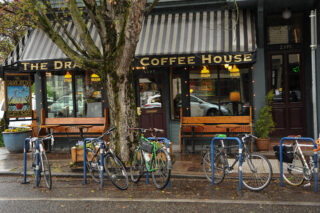
(Photo: J. Maus/BikePortland)
Part of NW Portland Week.
Thurman Street is the last neighborhood north where you can find the sort of stuff that, for a lot of people, make Portland Portland.
One block north of the Food Front Cooperative Grocery and the gluten-free bakery Dessert Labs, you hit the Holiday Inn Express. Then come the railroad tracks, warehouses, gravel distributors, floodplains and eventually just trees to the end of the earth, or at least to Scappoose.
Walking down Thurman Street itself is so rewarding that one of Portland’s most famous residents wrote a whole book about it. They keep a copy behind the reference desk at the branch library on NW 23rd and Thurman: Blue Moon over Thurman Street, published in 1993 by the novelist Ursula K. Le Guin and the photographer Roger Dorband.
Le Guin (who’s now 86 and still lives off Thurman) recruited Dorband (then a Portlander, now based in Astoria) to walk Thurman with her in July 1985 and tell the stories of the street.
But the book, and Thurman Street itself, is all the more beautiful for a story that isn’t in it: Just like Division and Clinton streets in southeast Portland, it was supposed to be long gone by now. Thurman spent most of the 1970s scheduled to be purchased by the Oregon Department of Transportation and bulldozed to make way for what would have been Interstate 505, a 1.4-mile freeway spur that would have connected I-405 directly to St. Helens Road.
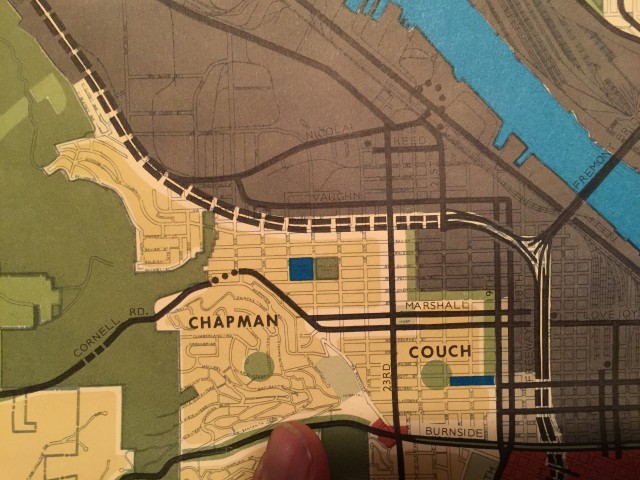
(Image via Kernal Moses)
Why did Thurman survive long enough for Le Guin and Dorband to memorialize it, and for Portlanders to park their bikes in the corral outside the Dragonfly Coffee House today? In part because of the mostly forgotten actions of two women 37 years ago.
One of them was Connie McCready, the last Republican to serve as mayor of Portland. The other was Marjie Lundell, a northwest Portlander working as one of McCready’s assistants when she was a city commissioner in 1979.
Thanks to the defunct website of the late Portland planner and historian Ernie Bonner, which you can still browse on Archive.org, we tracked down Lundell and spoke with her by phone on Thursday. Here’s a lightly edited version of what happened, in Lundell’s words, when the decision to condemn the land along Thurman and Savier streets for Interstate 505 came before Portland City Council.
I think it’s one of the best stories ever in City Hall.
I was living in an apartment in Northwest: 23rd and Glisan. The highway department had been saying for years that they were going to build that freeway. Nobody was doing everything to improve property because everybody knew there was going to be a freeway there. It’s social engineering at its scariest.
Connie was a very interesting person to work with. She was a reporter herself, so fair and balanced reporting was absolutely required. But you could pitch.
The council was split 3-1 in favor of the freeway, and Connie hadn’t announced a position. Lloyd Anderson was on the council; he was an engineer, and he was planning to vote yes. Connie really, really trusted his opinion.
It was the day of the vote, and they were to vote at 2 o’clock. And we would go out to lunch. So I just said, “Let’s take a tour of the Thurman-Vaughn corridor and have a look at the land you’re going to vote on.” So we drove Thurman. and Connie would say, “Oh look at that little Victorian house!” And I would go, “That would be part of the take.” And I had also arranged for lunch at a little Chinese restaurant in the industrial area. Because the idea was that we needed the freeway because it was so hard to get to the industrial area, and I wanted to show how easy it was to get there.
At lunch, I made my pitch the last time. And she said, “You know, everything you said makes sense to me, you may even be right, but Lloyd is going to vote yes.” So that was it.
Then the fortune cookies come, and Connie opens up this fortune cookie. And she looks up at me and says, “Oh my god, you are good.”
And I said, “What?”
She said “Look what it says!”
It said There is still time to choose an alternate path.
I didn’t have a thing to do with it. I just looked up and I said, “I tell you, it’s the right choice.”
When we got back to City Hall, it came in that Lloyd was going to change his vote to “no” on the freeway. She gave him the fortune cookie, and when he was explaining his vote he read it to the council.
It was a cliffhanger and people knew that she was the swing. When she announced her no vote, all the people from Northwest burst into applause.
If you go down to the Thurman-Vaughn corridor today and look east, it looks exactly like the architectural rendering back then said it would: apartment houses and little shops and people walking dogs. I eventually bought a house, and later I learned that the bank that my house sits on would have been the berm for the freeway going off into St. Helens.
But we stopped it.
A lot of the reporting we’ve done on northwest Portland this week has looked at ways the area is trying to reconnect the neighborhoods that were split by one fateful decision: the construction of Interstate 405. If it weren’t for the work of Portlanders like McCready and Lundell, among many others, we’d have a lot more problems to write about today.
Thanks for this post also go to Carl Larson, a longtime fan of NW Thurman who introduced me to Le Guin’s book, and to former Mayor Bud Clark, a northwest Portland resident who remembered part of the fortune cookie story and wrote to Bonner about it. Correction 4/17: An earlier version of this post omitted relevant details about Anderson’s vote, which also changed at the last minute.
— Michael Andersen, (503) 333-7824 – michael@bikeportland.org
Our work is supported by subscribers. Please become one today.


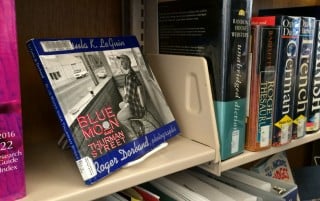

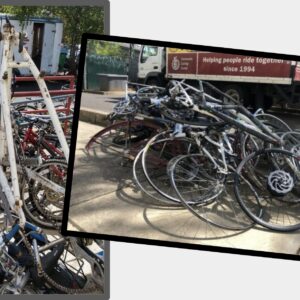


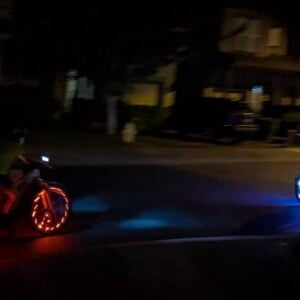
Thanks for reading.
BikePortland has served this community with independent community journalism since 2005. We rely on subscriptions from readers like you to survive. Your financial support is vital in keeping this valuable resource alive and well.
Please subscribe today to strengthen and expand our work.
Stories like that and the cancelled SW Multnomah Expressway are rarely told. The residents of Garden Home received the Fanno Creek Trail instead of a car freeway.
I don’t know the Multnomah Expressway story, Rick! Got more about that?
https://www.google.com/maps/d/viewer?mid=zEic9X1fFjO0.kODziGBAiVwQ&hl=en
and
http://archive.pdxradio.com/2009-14/topic/portland-areas-1st-planned-freeway-system-1955
The Oregon Electric Trolley ran on SW Multnomah Blvd and had an extension on SW Maplewood Road. This trolley split in Garden Home and one connected to Metzger and downtown Tigard while the other one went to downtown Beaverton.
https://swtrails.org/2014/06/05/the-southern-pacifics-red-electrics-a-walkers-guide/
Does ODOT have documents? The ought to share their cancelled plans on the Active Transportation part of their site.
That first map would make an amazing rail transport system though!
Compare that unbuilt highway map map with a map of Minneapolis at the same scale and they start to look very similar. Except Minneapolis actually built all those highways. It’s good to get some perspective every once in a while, especially against our #1 bike rivals. 🙂
I’m from Minnesota. We pulled survey markers repeatedly for years as boys to stop I-94 from bulldozing through our beautiful area west of Sunfish lake. Unfortunately, once the bridge was started across the Minnesota river destruction was irreversable. That was the probably the biggest betrayal I’ve ever felt and the reason I left that frigid dump at 18 for somewhere . . .
How to say it in PC. . . A bit different. I love Oregon.
I thus ALWAYS question the intended purpose of oversized scale bridges.
Indeed, the story of I-505 often gets ignored. I always wonder what it would have been like if Portland had stopped I-405 and I-5 from ripping apart the fabric of inner neighborhoods.
It would be like SE Powell every 3-4 blocks in a grid pattern.
how so?
It would be like Vancouver Canada.
https://www.google.com/maps/@49.2690543,-123.1367072,12.75z
https://www.google.com/maps/@45.5318723,-122.6679243,12.75z
thanks for writing this, made me feel optimistic for the future
Ahhh, yes. Thurman. Remember the Forestry Building? Old Early Winters store? Norm Thompson Outfitters (where I bought a pair of elephant hide shoes — now illegal — which were the most comfortable and waterproof shoes ever).
I’ve walked Thurman a lot in the last few years since I work up there… it’s pretty nice with the old houses and trees… however all the new houses with driveways in front make it so there are large portions of street with nothing but driveways 2′ apart from each other… the cars zoom from stop sign to stop sign in a hurry to get to their next destination…
navigational hazards abound for people on foot and bike… sidewalk tripping hazards and overgrowth, curb cuts for illegal street crossings, old tracks coming through the pavement…
they still love their cars on Thurman…
Wow, Michael! I lived in this neighborhood for years and knew about the planned freeway, but I never heard this story about why it never happened. Thurman Street should have a Fortune Cookie Fest street party every summer.
OMG, that’s an awesome idea, Rebecca!! NW Thurman indeed should have a fortune cookie people’s fair every year! And fortunes could be read aloud and even be awarded prizes for numerous categories, not the least of which is a category focusing on City Repair-esque placemaking throughout the Thurman/Vaughn corridor.
Endless fun can always be had with fortune cookies (the phenomenal 99% Invisible podcast has a really fun episode about fortune cookies). We’re all fortunate recipients of that fateful fortune cookie’s message! I wonder if she still has that priceless little piece of paper. 🙂
I was in Seattle for a CBC ride recently, and they had fortune cookies at one stop (in the ID, of course). The messages were biking-specific.
Pretty cool.
They should have a giant rotating fortune cookie on a stick somewhere.
This is an amazing story. Thanks for sharing it!
Wonderful story, wonderful storytelling. I really enjoyed this!
Great story, now I’ll have to read that book. I’ve been wanting to see pictures of that era (and especially of the 1990s on 23rd).
And Bud Clark is the best, of course.
In the early 80’s I used to live in a house on 22nd and Vaughn, now gone, since the 405 ramp was built there. Anyone know what is getting built on Thurman and 28th, where they just tore down that blue bldg?
There’s no new permit shown (beyond the demo this year) in portlandmaps.com as of 4/17/16. The address there is 1831 NW 28th, if you want to track it.
It was torn down for having structural issues. The owners are obv from out of town, and it was up for sale for $5mm when the demo happened. The owners probably levelled it and then are selling the property for something. That’s backwards of most things, where it gets levelled because a project is pending.
When I was a young boy here in SE Portland, my Mom was part of the grass roots effort to shut down the Edwin Moses inspired Mt. Hood Freeway that would have cut a massive swath through my very livable neighborhood. However, I do not remember the story of the proposed I-505. I lived in the NW neighborhood in the early 1990s and am intimate with Thurman and Vaughn. Thank you for bringing this bit of Portland history to light. Oh, and NYC is still trying to recover from Edwin Moses’ ripping apart of neighborhoods.
Edwin Moses was a *slightly* different Moses! Sorry, couldn’t resist. 🙂 Robert Moses was the guy who destroyed more of New York City’s urban connectivity than any other single person ever has. And Edwin Moses is certainly a fitting reference, because Robert Moses did indeed “hurdle” right over hundreds of government blockades to get his way for decades! Fortunately he stumbled in his hurdle attempts with Jane Jacobs and friends, who were able to block a few of his most disastrous proposals.
And Clark in Vancouver, I LOVE your idea of having a giant fortune cookie rotating on a stick! Keep Propping Portland’s Weird Artsy Fortunes! 🙂
I have a copy of the 1966 Portland Comprehensive Development Plan, courtesy of Kernal Moses.
I snapped a couple shots showing the route of the I-505 freeway as proposed in 1966.
Close-crop
https://www.flickr.com/photos/11599639@N03/26458054145/in/dateposted-public/
Context
https://www.flickr.com/photos/11599639@N03/26185201650/in/dateposted-public/
Look at how nicely it would have linked up with the Prescott Freeway and Going Expressway via the Fremont Bridge.
Ted in OR.
This is a good example, folks, of how tight the margin can be between failure and success.
Always make the effort to reach out, share the things you love with those who have the power to preserve or destroy them.
Ted Buehler
In the 1970s, anticipating the construction of I-505 in the Thurman-Vaughn Corridor alignment, ODOT purchased most (or all?) of the affected properties between those two streets. In the early 80s, after the planned alignment was dropped, some good things happened to the sites as ODOT sold them off. PDC did several projects there. They did apts on NW Upshur between 26th & 27th Aves, and helped Food Front move to the NE corner of NW Thurman at 27th.
PDC also converted an 8-unit brick apt bldg to condos, on the north side of Thurman in the 2700 block. They installed insulation and new individual boilers, and arranged for subsidized mortgages. In 1981 PDC offered the units to the current tenants. Two of the units were purchased by tenants, the other six were sold in a lottery. A year later, I purchased one of the units and have lived in the building since then.
I’m sure there are a lot more stories to be told about the properties that ODOT purchased for I-505, then sold off when the plans changed.
“PDC did several projects there. ”
Fascinating. I don’t think I’ve *ever* heard anyone praise PDC’s work. Never ever. Good for them, I guess. I wonder if there are other stories out there…
The stories that usually come to light are cases like a 1910 era home 3 blocks down the street from me. PDC helped finance exterior renovation of the structure. The owner never finished the interior. The property has sat abandoned and slowly rotting away for five years now. Thanks, PDC.
Ted Buehler
Wow… so I-505 was killed before the Mt Hood Freeway? If so, the death of the MHF might need to be moved into place as more of a continuation/culmination in the story of Portland’s avoiding Death by Interstate than as a the start of it. (Setting aside Harbor Drive/Waterfront Park as not part of the Interstate system.) Thanks for the story.
The MHF plan was cancelled earlier than I-505. I think it was in 1974.
For more about the i-505 freeway fight see i-505.com